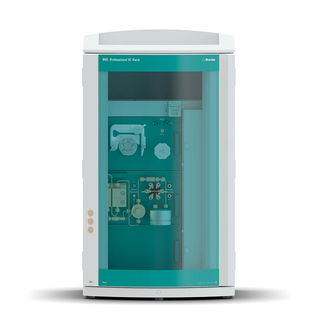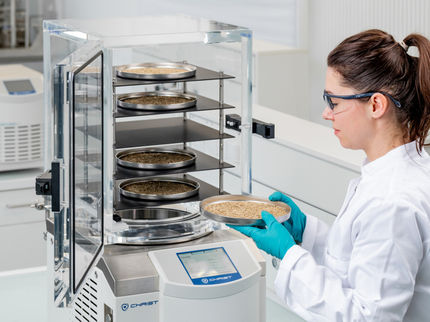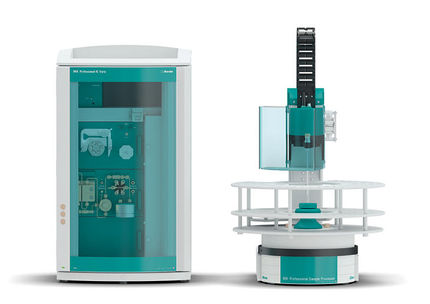| Chemokine (C-X3-C motif) receptor 1
|
| Identifiers
|
| Symbol(s)
| CX3CR1; CCRL1; CMKBRL1; CMKDR1; GPR13; GPRV28; V28
|
| External IDs
| OMIM: 601470 MGI: 1333815 Homologene: 20350
|
| Gene Ontology
|
| Molecular Function:
| • rhodopsin-like receptor activity
• protein binding
• coreceptor activity
• C-X-C chemokine receptor activity
|
| Cellular Component:
| • plasma membrane
• integral to plasma membrane
|
| Biological Process:
| • chemotaxis
• cellular defense response
• cell adhesion
• signal transduction
• G-protein coupled receptor protein signaling pathway
• response to wounding
|
|
| RNA expression pattern
|
|
More reference expression data
|
| Orthologs
|
|
| Human
| Mouse
|
| Entrez
| 1524
| 13051
|
| Ensembl
| ENSG00000168329
| ENSMUSG00000052336
|
| Uniprot
| P49238
| Q543X3
|
| Refseq
| NM_001337 (mRNA)
NP_001328 (protein)
| XM_983192 (mRNA)
XP_988286 (protein)
|
| Location
| Chr 3: 39.28 - 39.3 Mb
| Chr 9: 119.75 - 119.92 Mb
|
| Pubmed search
| [1]
| [2]
|
Only one member belongs to the CX3C sub-family of chemokine receptors - CX3CR1. As the name suggests, this receptor binds the chemokine CX3CL1 (also called neurotactin or fractalkine).
Expression of this receptor appears to be associated with lymphocytes.[1]
References
- ^ Imai et al. Identification and molecular characterization of fractalkine receptor CX3CR1, which mediates both leukocyte migration and adhesion. Cell 91: 521-530, 1997.
Further reading
- Robertson MJ (2002). "Role of chemokines in the biology of natural killer cells.". J. Leukoc. Biol. 71 (2): 173-83. PMID 11818437.
- Raport CJ, Schweickart VL, Eddy RL, et al. (1995). "The orphan G-protein-coupled receptor-encoding gene V28 is closely related to genes for chemokine receptors and is expressed in lymphoid and neural tissues.". Gene 163 (2): 295-9. PMID 7590284.
- Combadiere C, Ahuja SK, Murphy PM (1995). "Cloning, chromosomal localization, and RNA expression of a human beta chemokine receptor-like gene.". DNA Cell Biol. 14 (8): 673-80. PMID 7646814.
- Maruyama K, Sugano S (1994). "Oligo-capping: a simple method to replace the cap structure of eukaryotic mRNAs with oligoribonucleotides.". Gene 138 (1-2): 171-4. PMID 8125298.
- Suzuki Y, Yoshitomo-Nakagawa K, Maruyama K, et al. (1997). "Construction and characterization of a full length-enriched and a 5'-end-enriched cDNA library.". Gene 200 (1-2): 149-56. PMID 9373149.
- Imai T, Hieshima K, Haskell C, et al. (1997). "Identification and molecular characterization of fractalkine receptor CX3CR1, which mediates both leukocyte migration and adhesion.". Cell 91 (4): 521-30. PMID 9390561.
- Combadiere C, Salzwedel K, Smith ED, et al. (1998). "Identification of CX3CR1. A chemotactic receptor for the human CX3C chemokine fractalkine and a fusion coreceptor for HIV-1.". J. Biol. Chem. 273 (37): 23799-804. PMID 9726990.
- Mizoue LS, Bazan JF, Johnson EC, Handel TM (1999). "Solution structure and dynamics of the CX3C chemokine domain of fractalkine and its interaction with an N-terminal fragment of CX3CR1.". Biochemistry 38 (5): 1402-14. doi:10.1021/bi9820614. PMID 9931005.
- Maho A, Bensimon A, Vassart G, Parmentier M (2000). "Mapping of the CCXCR1, CX3CR1, CCBP2 and CCR9 genes to the CCR cluster within the 3p21.3 region of the human genome.". Cytogenet. Cell Genet. 87 (3-4): 265-8. PMID 10702689.
- Faure S, Meyer L, Costagliola D, et al. (2000). "Rapid progression to AIDS in HIV+ individuals with a structural variant of the chemokine receptor CX3CR1.". Science 287 (5461): 2274-7. PMID 10731151.
- Yoneda O, Imai T, Goda S, et al. (2000). "Fractalkine-mediated endothelial cell injury by NK cells.". J. Immunol. 164 (8): 4055-62. PMID 10754298.
- Meucci O, Fatatis A, Simen AA, Miller RJ (2000). "Expression of CX3CR1 chemokine receptors on neurons and their role in neuronal survival.". Proc. Natl. Acad. Sci. U.S.A. 97 (14): 8075-80. doi:10.1073/pnas.090017497. PMID 10869418.
- Papadopoulos EJ, Fitzhugh DJ, Tkaczyk C, et al. (2000). "Mast cells migrate, but do not degranulate, in response to fractalkine, a membrane-bound chemokine expressed constitutively in diverse cells of the skin.". Eur. J. Immunol. 30 (8): 2355-61. PMID 10940926.
- Moatti D, Faure S, Fumeron F, et al. (2001). "Polymorphism in the fractalkine receptor CX3CR1 as a genetic risk factor for coronary artery disease.". Blood 97 (7): 1925-8. PMID 11264153.
- Foussat A, Bouchet-Delbos L, Berrebi D, et al. (2001). "Deregulation of the expression of the fractalkine/fractalkine receptor complex in HIV-1-infected patients.". Blood 98 (6): 1678-86. PMID 11535497.
- Dichmann S, Herouy Y, Purlis D, et al. (2002). "Fractalkine induces chemotaxis and actin polymerization in human dendritic cells.". Inflamm. Res. 50 (11): 529-33. PMID 11766992.
- Brand S, Sakaguchi T, Gu X, et al. (2002). "Fractalkine-mediated signals regulate cell-survival and immune-modulatory responses in intestinal epithelial cells.". Gastroenterology 122 (1): 166-77. PMID 11781291.
- Utaipat U, Duerr A, Rudolph DL, et al. (2002). "Coreceptor utilization of HIV type 1 subtype E viral isolates from Thai men with HIV type 1-infected and uninfected wives.". AIDS Res. Hum. Retroviruses 18 (1): 1-11. doi:10.1089/088922202753394664. PMID 11804551.
- Fong AM, Alam SM, Imai T, et al. (2002). "CX3CR1 tyrosine sulfation enhances fractalkine-induced cell adhesion.". J. Biol. Chem. 277 (22): 19418-23. doi:10.1074/jbc.M201396200. PMID 11909868.
|







